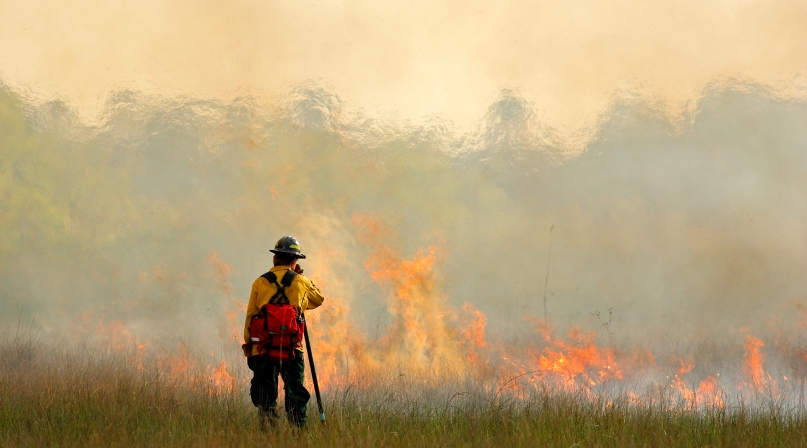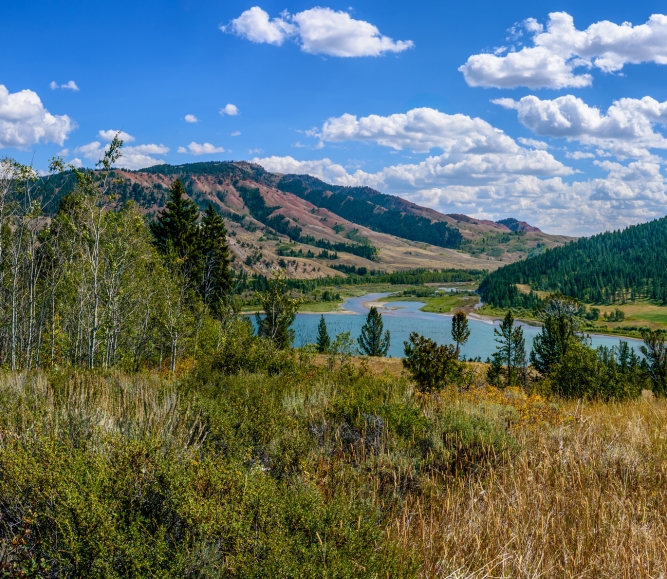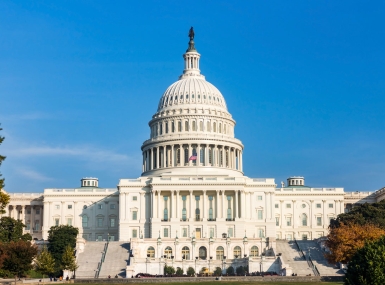USDA and DOI announce major actions to streamline federal wildfire response
Author

Zeke Lee

Andrew Nober
Upcoming Events
Related News

Key Takeaways
On September 15, the U.S. Departments of the Interior (DOI) and Agriculture (USDA) announced major joint directives to change how the agencies will coordinate and provide wildfire response, including the creation of a new U.S. Wildland Fire Service within Interior. The changes aim to improve wildfire response and streamline cooperation between the two departments, which may significantly impact how public lands counties work with federal agencies to respond to wildfires.
Background on the agencies’ changes
On June 12, President Trump signed Executive Order 14308, Empowering Commonsense Wildfire Prevention and Response, which directed DOI and USDA to take steps to streamline federal wildfire response procedures, including the consolidation of firefighting resources across the two departments.
Through DOI’s several land management agencies and the U.S. Forest Service (USFS) under USDA, the two departments currently oversee federal wildland firefighting efforts on hundreds of millions of acres of federal land. Due to the overlapping jurisdiction and resources of federal, state and local entities, coordinating firefighting activities is a complex but vital task.
What do the actions change?
Departmental officials will make significant changes to federal wildfire response organization both within and across federal departments. While DOI and USDA’s announcements do not detail a complete consolidation as indicated in Trump's executive order, they do concentrate resources to a high degree.
In USFS, Secretary of Agriculture Brooke Rollins’s secretarial order announced the consolidation of the fire leadership structure to report to a single Forest Service deputy chief to centralize authority. It also orders broad standardization of hiring and job classifications across the entire Forest Service.
As part of his secretarial action, Interior Secretary Doug Burgum announced a sweeping reorganization of the department's firefighting resources into a new U.S. Wildland Fire Service. The new agency, which will be headed by its own fire chief, unifies all of DOI's wildland fire resources into a single entity that will provide firefighting services and coordinate with other responders. The order directs the Interior Department's land management agencies to create a plan for consolidation by Oct. 31, which will be implemented in early 2026. A fire chief has not been announced.
In addition to the creation of the Wildland Fire Service, USDA and DOI announced new efforts to increase collaboration between agencies and improve fire response:
- Standardization of wildland firefighter positions and pay scales across departments.
- Realignment of USDA and DOI procurement, contracting, reimbursement and training certification processes.
- Consolidation of wildland fire prediction and research entities into a single national Fire Intelligence Center.
- General modernization of infrastructure and updating standards for information sharing and research.
- Deeper cooperation between the Forest Service and the new U.S. Wildland Fire Service.
The orders designate the Forest Service and U.S. Wildland Fire Service as the two major federal wildland firefighting agencies and instructs them to collaborate to the fullest extent possible on all aspects of fire response operations.
Impact on counties
Counties are frontline emergency service providers who play a major role in wildfire response on federal lands. Large wildfires are major disasters for impacted communities with serious long-term social, economic and environmental consequences that counties are responsible for managing.
Responsible and informed forest management decisions are essential to ensuring healthy forests. As local land management partners, counties have significant expertise that is essential to wildfire mitigation and response planning.
Accordingly, changes to federal wildland firefighting procedures should include increased cooperation with county authorities. Both secretaries' orders direct their departments to solicit feedback and input from local governments as agencies and offices plan changes and new policies.
NACo will continue to monitor any opportunities for county input and collaboration, particularly with the creation of the new U.S. Wildland Fire Service.
Advocacy
U.S. Forest Service announces recission of Roadless Rule in National Forests
On August 29, U.S. Secretary of Agriculture Brooke Rollins announced that the U.S. Department of Agriculture (USDA) will repeal the 2001 Roadless Rule, which prohibited road construction, reconstruction and logging on almost 45 million acres of U.S. Forest Service land.

Related News

Counties Celebrate Passage of Secure Rural Schools Reauthorization Act
Over 700 counties to receive essential resources supporting education, transportation, public safety

Congress passes Secure Rural Schools Reauthorization Act of 2025 in victory for counties
In a major victory for counties, Congress passed the bipartisan Secure Rural Schools (SRS) Reauthorization Act of 2025 (S. 356) on December 9. The bill provides payments to counties for Fiscal Year (FY) 2024 and FY 2025 and reauthorizes the SRS program through the end of FY 2026, and delivers critical relief to timber-dependent counties that rely on these funds to maintain essential services and transition toward long-term fiscal stability.

House Natural Resources Committee advances Standardizing Permitting and Expediting Economic Development (SPEED) Act
On November 20, the U.S. House Committee on Natural Resources advanced the Standardizing Permitting and Expediting Economic Development (SPEED) Act (H.R. 4776), which would make important changes to streamline federal permitting and strengthen county involvement in decision-making by amending the National Environmental Policy Act. Counties support commonsense permitting reforms, and NACo secured provisions in the SPEED Act that would guarantee counties a seat at the table during federal environmental reviews.